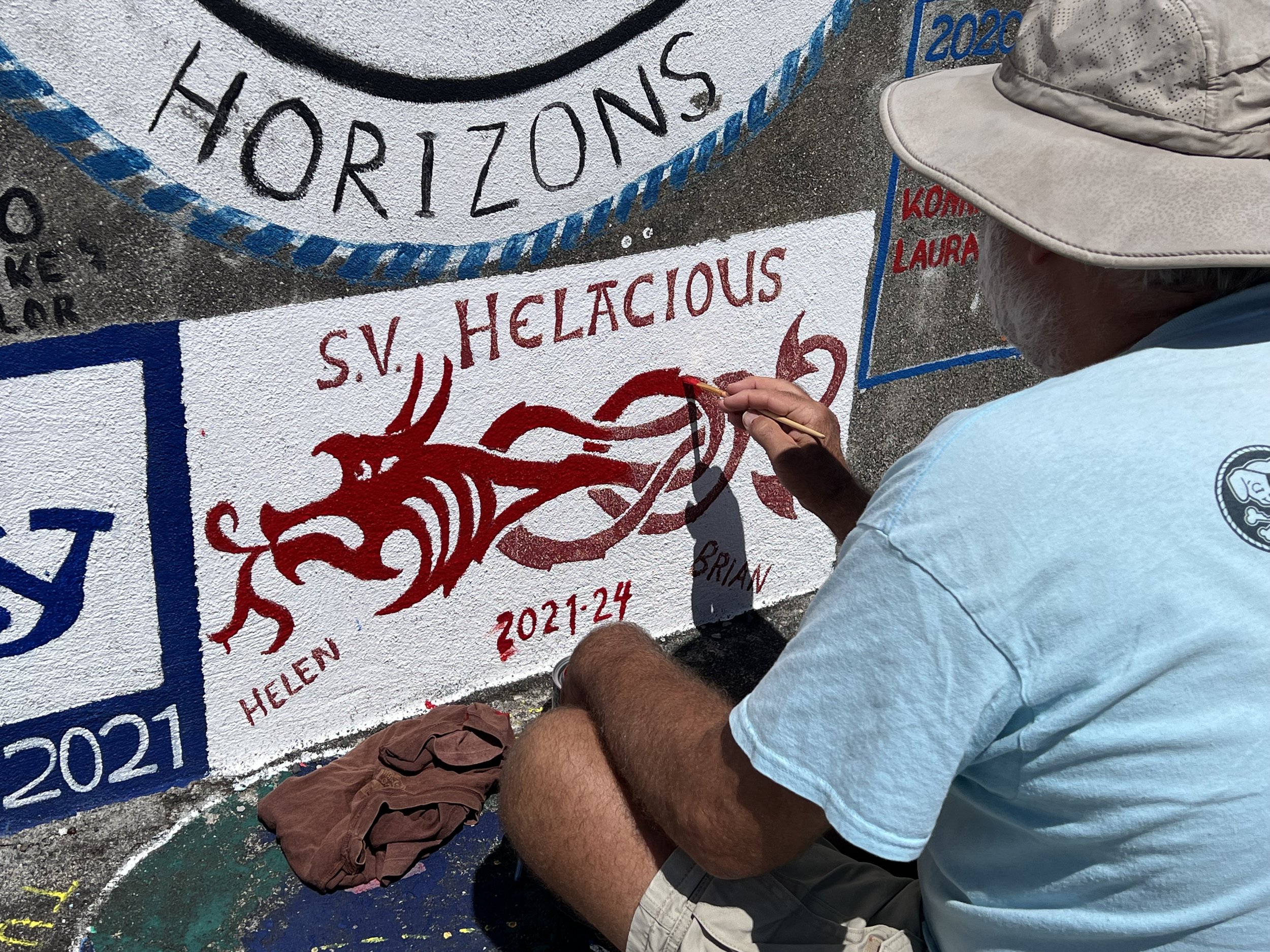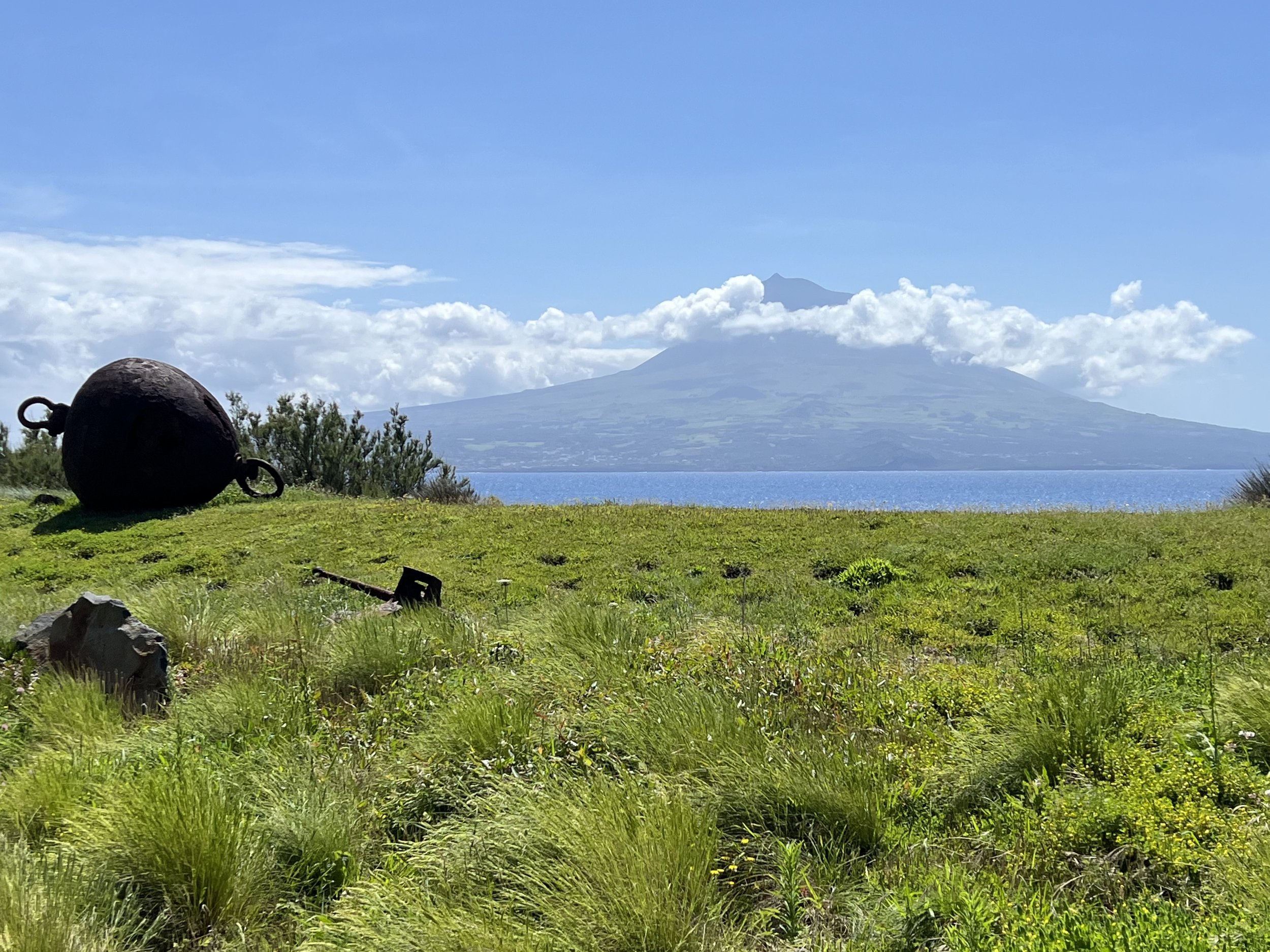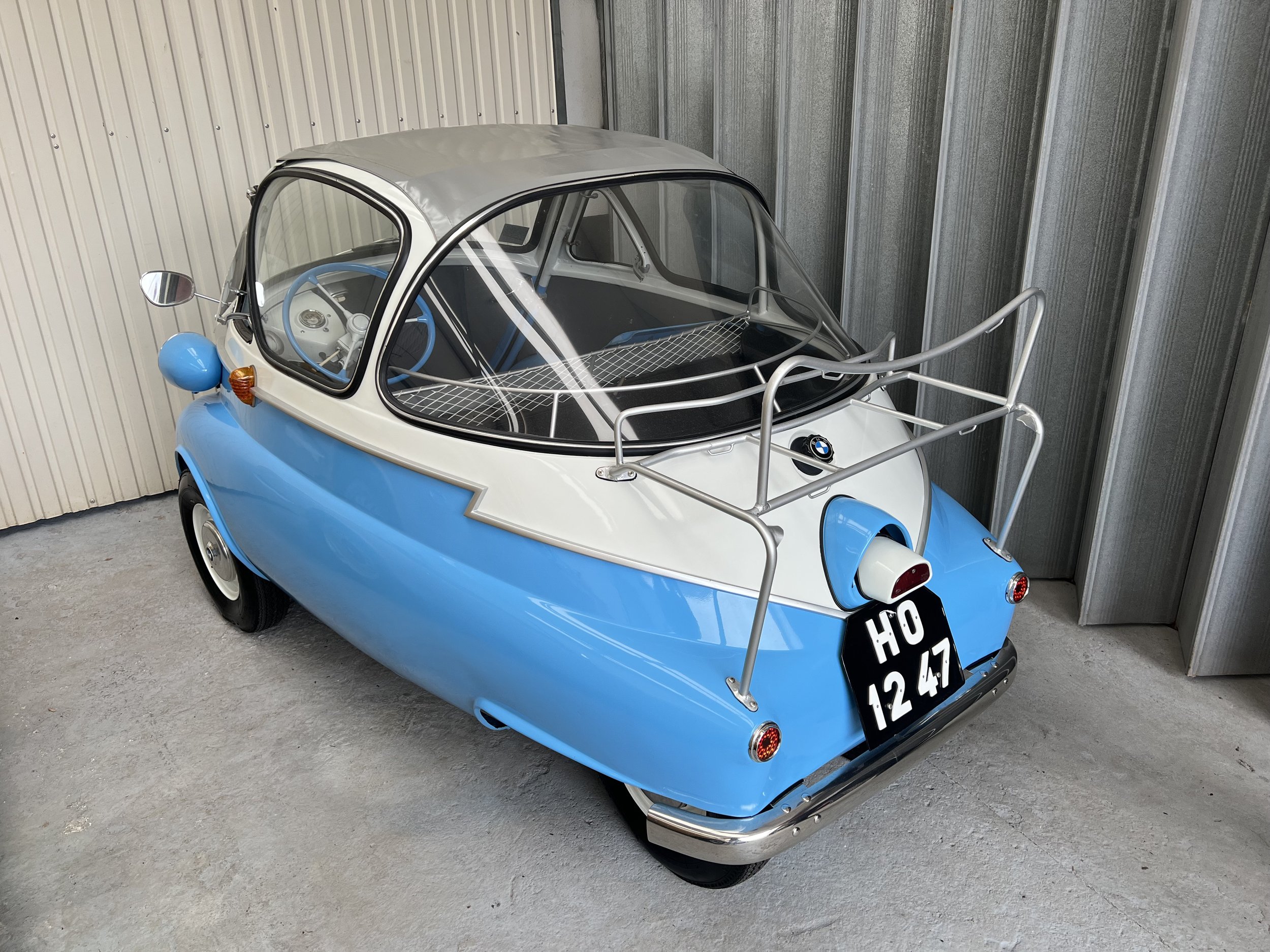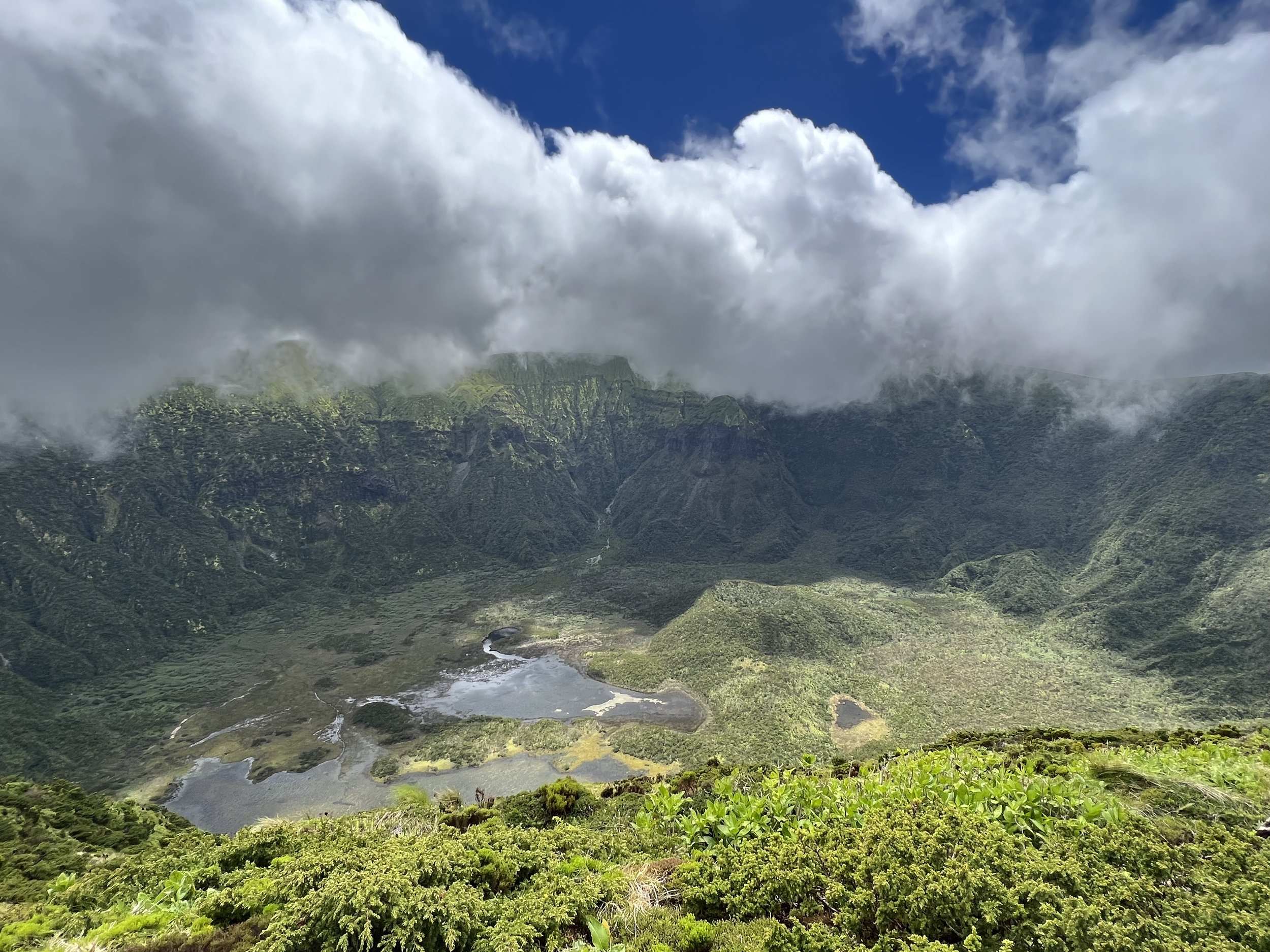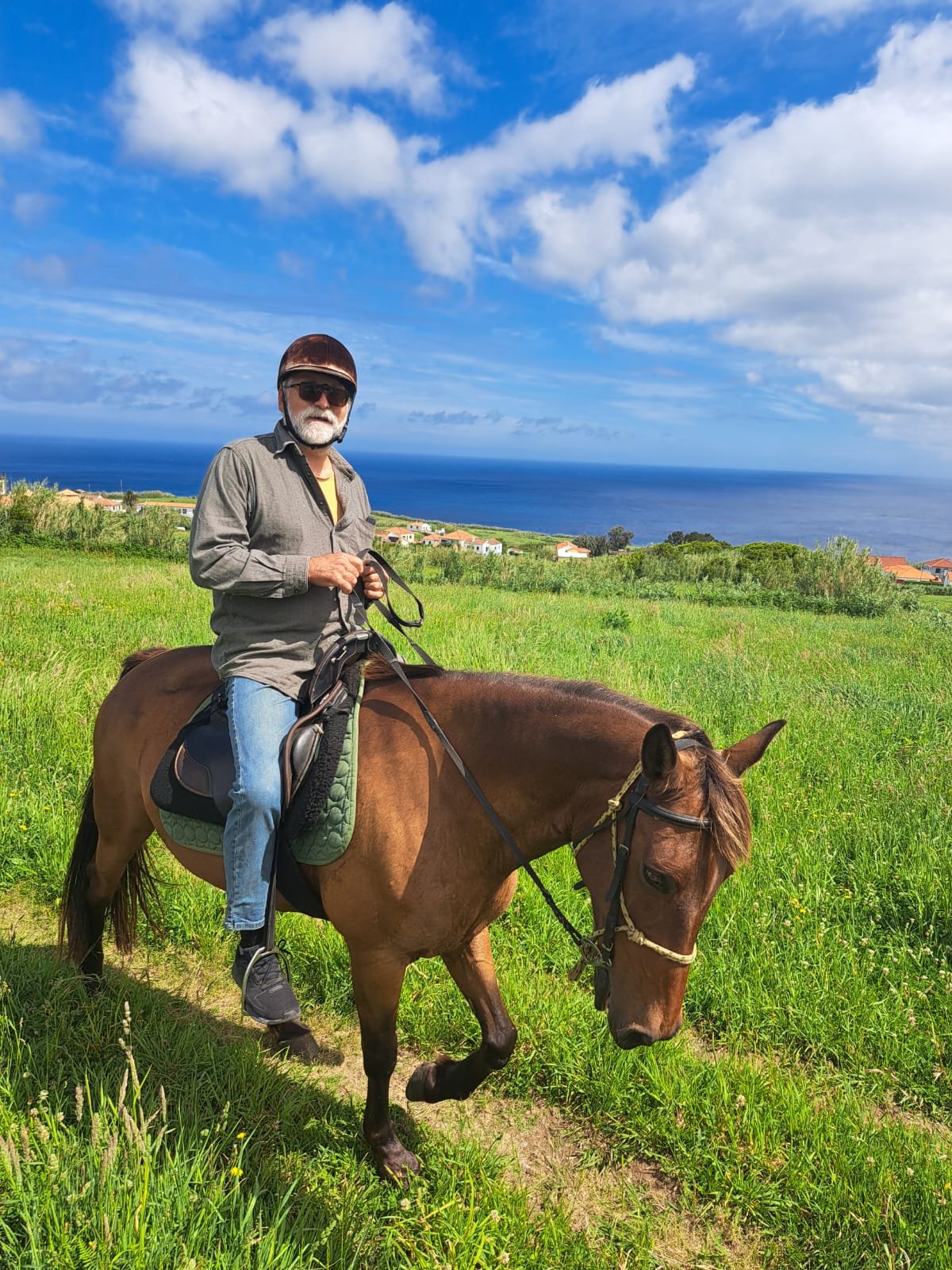A Lesson Learned
Brian updates and touches up our wall painting in Horta.
We arrive in Horta on a Friday afternoon and the anchor sets easily. We are lucky, a number of boats drag over the next few days, the bottom is either rocky or soft mud. After checking in we catch up on some much needed sleep. The next day we went ashore and had lunch at the famous Peter Sport Cafe. It is fun whiling away the time looking for flags from sailors that have been there before.
The weather was lovely so we went for a hike up the hill for views over Horta. The spring flowers were in full bloom and the view of Pico over the water to the south was amazing. It changes so quickly, sometimes the peak is clear, 10 minutes later it is shrouded in clouds. Horta is wrapped around a couple of bays and retains its old world charm with no high rises or office buildings. We did not visit the old whaling station, which is now a whaling museum, as we had seen that on our last visit, but we were reminded of the industry of the process when seeing the slope where they dragged up the carcass and the chimney for the ovens where the blubber was rendered.
Whaling museum.
Our friends on Frogs Leap arrived a little after us. One of their crew had to leave immediately without exploring Horta at all. What a shame, to have sailed so far and not had a chance to explore these beautiful islands. Theirs had been a plague ship, the sailor’s second worst nightmare: Illness at sea. A crew member was quite sick with Dengue Fever which he had picked up in Antigua. Edwin, the captain was in contact with the US coastguard medical team and made a course for Bermuda. After drifting for a couple of days within evacuation distance of Bermuda, they got the all clear and finally turned their bow toward the Azores.
After about 3 days at anchor we scored a coveted spot, tied up to another boat along the wall in the marina. We were lucky, the ARC boats started arriving just 5 days later and took any and all the free spots. Helacious being secured safely, we could enjoy the fine weather and so we rented a car and set off.
Just joking, we did not rent this one!
The first day with John, crew from Frogs Leap, we drove along the north and east coast, new territory for us. The lighthouse protecting the southeastern tip of Faial was unusual in that it was a square tower encased in tile, so very Portuguese. Unfortunately in the earthquake of 1998 it was damaged beyond repair, but still stands. An imposing monument in the fields.
We drove along the coast and checked out a couple of the natural swimming pools. Some were better maintained than others. It was still a little cool for us to venture in the water, we just enjoyed looking.
After a nice lunch we drove up to the caldera of the ancient volcano that dominates the center of Faial. The clouds had cleared somewhat, and we had a great hike all around the rim. The winds at times were wicked.
The next day we claimed our Christmas adventure gift from Jake: a morning of horseback riding. This was something I had long wanted to do, but being rather timid of horses, had not followed up on. Here was an opportunity in a beautiful and special location. We arrived in the morning at the ecolodge The Patio, and were paired up with our steeds. We had a lovely morning, walking sedately through the fields and small town along the cliffs overlooking the blue Atlantic.
Feeling a little apprehensive at the start.
The weather then turned sour and for a week we had intermittent rain and cloudy skies. We continued with chores, fixed the radar using a hot knife to fuse the plastic drive belt back together. We did not do much more exploring, other than walks around and above town, enjoying the varied pavement designs and views. We had explored thoroughly on our first visit 3 years previously and somehow did not feel the need to go over trodden ground. Even trips to Pico and São Jorge, both holding fond and special memories, seemed unnecessary. We touched up the wall painting along the sea wall at the marina, updating it with a record of our latest passage. We felt quite salty, this being our second visit, even among all these other transatlantic sailors. We watched the weather and finally, after just over two weeks in Horta we untied the lines, ready to head back to sea.
Wall paintings in Horta from boats that have passed through. I think our Helacious contribution holds up well.
The passage north was meant to ultimately take us to Oban, in Scotland. We had a family gathering to try and get to and friends to meet up with. There’s a saying that the most dangerous thing on a boat is a calendar. Weather forecasting is generally fairly reliable about 3-4 days out, beyond that the models rarely agree. As this passage was expected to take around 11 days, we felt we could set off and then bail out to Ireland if the last half of the trip looked uncomfortable.
After our two recent big passages, where we purchased support in the form of a weather router, we felt like we were equally up to the task of reading the data. En route we had never found the additional information they gave us of much use. We had come to the same conclusions about routing and sailing tactics by ourselves. We therefore decided not to ask for outside help, but carefully followed the patterns and spotted an opportunity. Leave Saturday morning to allow the fast moving cold front to pass, we would swing up behind and ride on the coat tails, so to speak, north toward Scotland. Long term weather forecasts are not accurate, so we were only really confident of about 4 days, but things looked good. It was June after all, and it seemed the Azores High had finally settled in. Weather was likely to be calmer for the foreseeable future.
The day of our departure Brian ran the weather once again, with the latest models and data released that morning. A new cold front was developing, just behind the one we had strategized about. However it did not look too large, we were a strong boat and our plan would still be sound, maybe just a day of higher winds. We set off.
We had great sailing for the first 36 hours, 150 miles a day, a little above average. The winds were higher than predicted- we had thought we would be motor sailing. By Sunday afternoon we were in light winds, enjoying the calm but we were beginning to check the weather models rather more than usual. The fronts we had previously identified had now expanded and were more extensive than when we left. Their path was different in each model, either staying north and moving toward Ireland after which there would be strong north wind preventing sailing up that coast, or moving southeast, into the Bay of Biscay. In either case the much larger size meant that we were not really going to be able to avoid it by simply slipping up the back route. Still we continued on, we had to expect some weather, it was the North Atlantic after all. We were experienced sailors, but this could be our first potential Gale. We would reef down to third reef early, use the staysail and practice how to heave-to. Monday morning brought more bad news. A new, very large low was now spinning off the southern tip of Greenland and would rapidly catch up with the two previous cold fronts marching across the Atlantic, reinforcing and intensifying the weather. The waves, initially predicted to be 8-10 feet, had now risen to a towering 18ft, and on the beam. In storms at sea, it is not the wind that sinks boats, it is the waves. This was not looking good.
We thought of our options. A run for northwest Spain, maybe seek shelter in the Rias? Hove-to for a couple of days to let it pass then continue on? Maybe head west and then north, really try to keep sailing but get around the back of it and just make the trip to Scotland a few days longer?
We realized we were out of our depth. The situation was changing more than we could keep up with, and the path was uncertain. We contacted our former weather router, Commander’s, detailing our concerns and what we thought our options were and asked for their advice. In the meantime, where we were, the winds were quite light and the seas almost flat. We were certainly in no rush to barrel into this mess, so we reefed down the mainsail and put out the staysail and set the boat in hove-to mode where we made gentle progress, just 1.5kt in a NNW direction, waiting to see what the response from our weather router would be. It was a stressful afternoon. The new models that came out in the early evening with a bigger picture showed yet another low forming off Nova Scotia and Newfoundland. This would not give us any break in the weather and no chance for the seas to die down, however long we bopped around waiting for it to happen. Finally at 6pm we got our answer.
The first sentence in the reply was, “Honestly, the best option would be to turn around and head back to Horta”.
So that is what we did. We did not take much convincing, we just needed someone else to suggest it! The detailed description that followed of the conditions that we would encounter if we chose to move forward were sobering. We wanted to live to sail another day. We usually consider ourselves fairly conservative sailors, but our inflated self confidence had gotten the better of us. We should not be sailing into what was now a North Atlantic with 3 separate identified gale warnings posted. However much we study the Grib files downloaded from the internet, we are not meteorologists and cannot easily assess “ the big picture”. The interactions between the various components of the weather systems are very complex and nuanced. Hiring a professional weather router is an invaluable tool for helping one start a passage in the best possible conditions. When the weather turns out to be benign, they are not needed any more, but how did that benign passage get identified? The answer is with professional help. We had sat in Antigua after all, for over a week and the Chesapeake for nearly 3 weeks, waiting for the ‘All Clear’ to leave. Why did we think we knew better? We clearly did not, and this was quite a lesson in humility for us.
We turned and sailed south, deciding to head for São Miguel, a new island to explore while we would make lemonade from the lemons we had just been served. Fortunately the seas were nice and calm, the wind moderate. Brian had been under the weather for most of the trip, it was now apparent this was not simply mal de mer, but a nasty cold. Three days later Helen started to suffer. It would have been really miserable to be having to cope with terrifying sailing conditions with all crew dealing with fuzzy heads and flu-like symptoms
The trip back to São Miguel took 2 -1/2 days. On the second day an alarm went off indicating battery overheating. We inspected the battery box and yes, one of the batteries was quite warm, indicating failure. If that had gone unchecked it could easily have caused a fire or complete battery bank failure. Again, we feel immensely grateful we had made the decision to turn around and not have to be dealing with this issue during gale force conditions. Brian made a temporary solution of removing the battery from the circuit, but a new battery would need to be sourced at some point. It was very disappointing as these batteries were less than a year old, purchased in Halifax, Nova Scotia last summer.
Still 30 nm to go.
Our ETA at the current speed would have us arriving at 4am, so we reduced sail and slowed down to 4kt, arriving in the morning fog at 7am. The large marina at Ponta Delgada was quite full, but we managed to spot a free slip and tied up. Exhausted, sick, chastened and relieved to not be moving, we checked in with the authorities, then went to bed. São Miguel could wait for another day.
